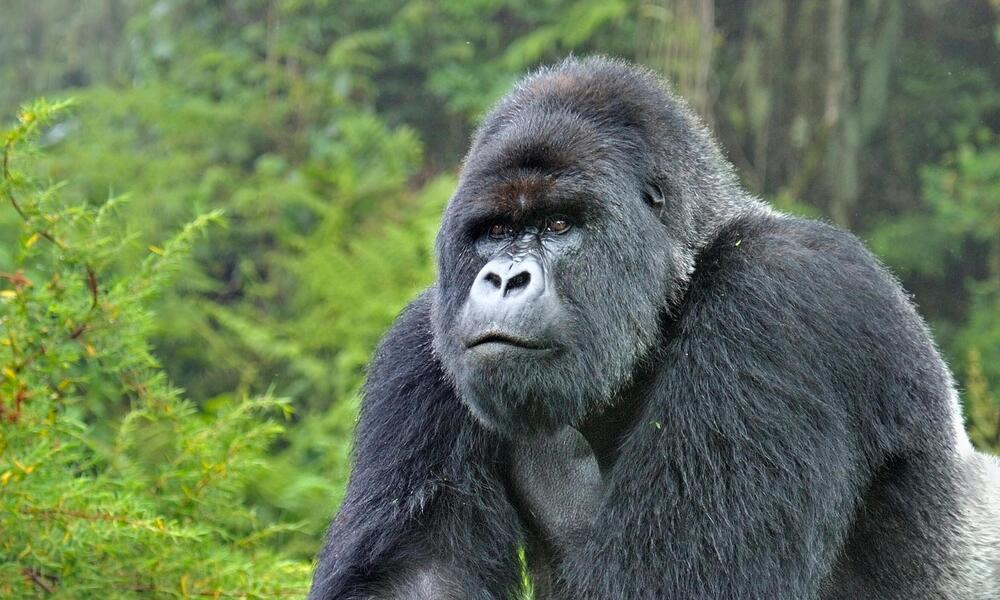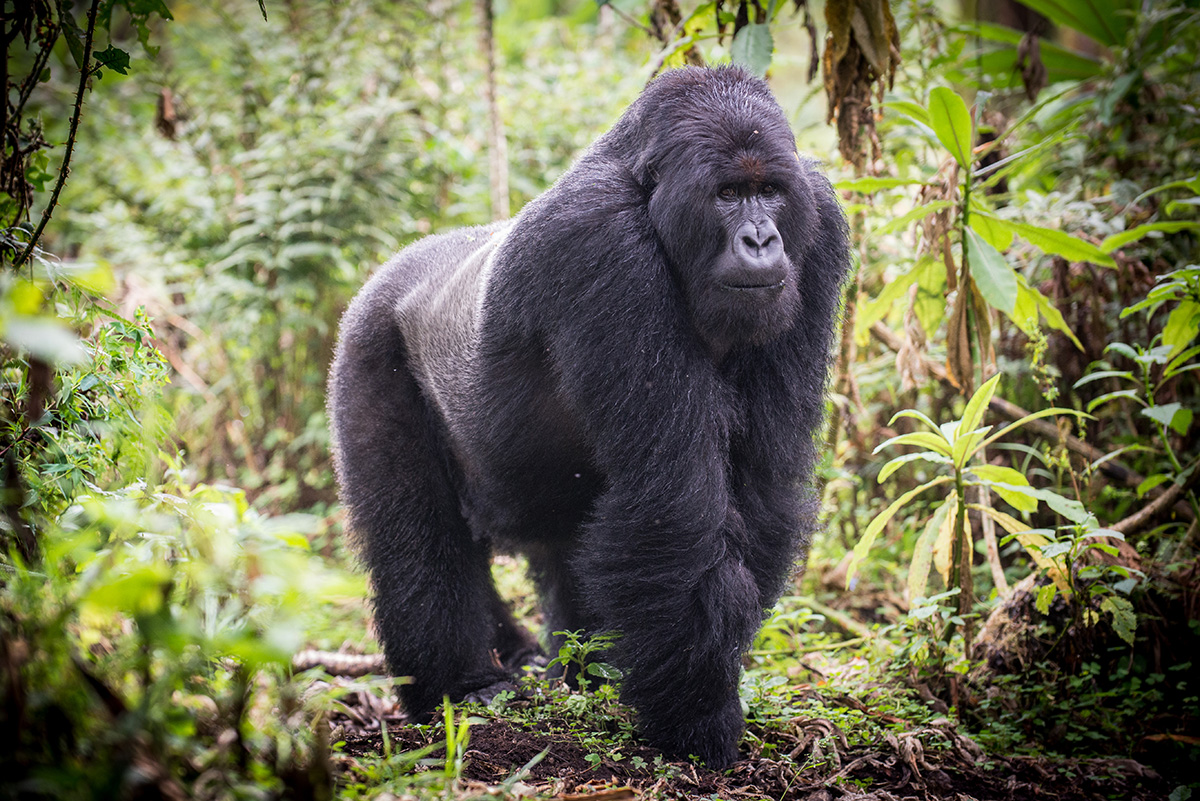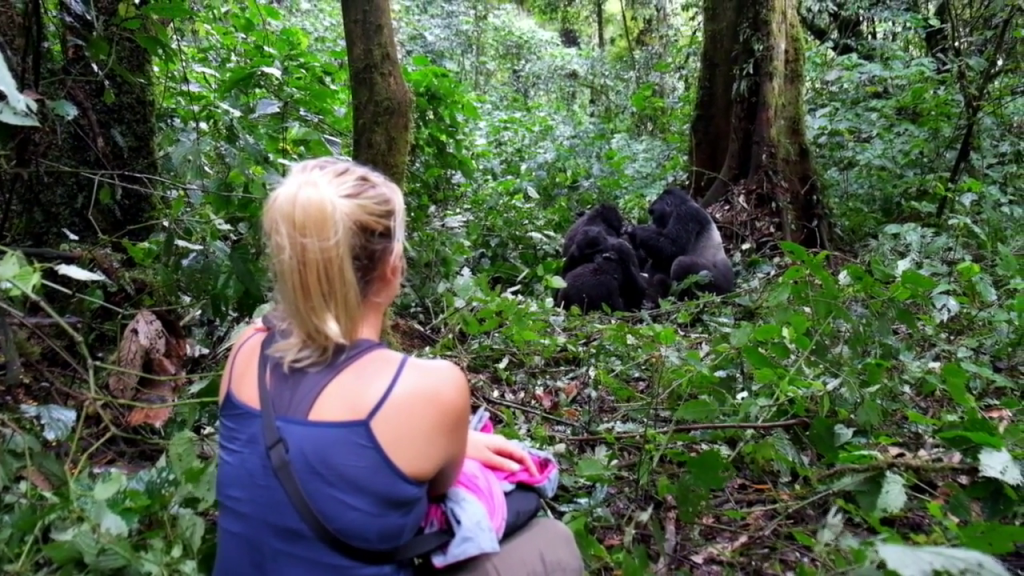Conditions For Tracking Mountain Gorillas in Uganda
Tracking the mountain gorillas in Uganda comes with a number of conditions to be fulfilled by travelers, and this is mainly attributed to the fact that these Giant Apes are endangered, live in fragile natural environments, and are closely related to mankind hence making them susceptible to communicable diseases.
There are presently about 1063 mountain gorillas (as per the last mountain gorilla Census of 2018, although the number is believed to have increased) and of these, more than half of them are found in Uganda. They are sheltered in two Protected Areas- Bwindi Impenetrable and Mgahinga Gorilla National Parks where about 20 gorilla families have been fully habituated for tracking. Mountain gorillas live in the densely forested areas of southwestern Uganda, between altitudes of 2500 and 4000 meters above sea level. While trekking and meeting face-to-face with the mountain gorillas in their natural habitat is a dream for many travelers to Uganda, not everyone can have the chance to enjoy this experience because you have to be eligible.

mountain gorillas in Uganda
To understand whether you are eligible for tracking the mountain gorillas in Uganda, we bring information on the conditions you have to fulfill and these include;
Be of age
One of the conditions to be fulfilled by travelers to track mountain gorillas within any of their natural habitats in Uganda is being of age and this implies you should be at least 15 years and above. Have you ever wondered why your 10, 12, or 13-year-old child can’t be allowed to achieve his/her dream of getting up close and personal with the giant Apes in their natural habitat? Let’s explain why. First, mountain gorilla trekking involves walking through steep slopes and high elevations ranging from 2500 to 4000 meters above sea level and physically demanding for a young child to handle, hence there are high chances of slowing the group. Additionally, it is difficult for young children to adhere to guidelines/instructions provided while briefing and tracking mountain gorillas. Also, there are high chances of a child screaming on sighting these Great Apes or when a silverback charges.

gorillas in Bwindi National Park
You should have a valid gorilla permit
A gorilla permit is your pass for tracking the mountain gorillas in their natural habitats and without it, there is no way you will get a chance to achieve your lifetime dream. Gorilla trekking permits in Uganda cost $700 per person per trek for foreign non-residents, $600 per person for foreign residents, and shs. 250,000 for East African residents and this has to be booked at least 6 months in advance to avoid last-minute disappointments. For the 20 habituated gorilla families in Uganda, only 160 gorilla permits are issued each day by Uganda Wildlife Authority.
Be physically fit for gorilla trekking

Gorilla safari experience in Uganda
Another condition for tracking mountain gorillas in Uganda is being physically fit for this adventurous once in a lifetime activity. Mountain gorillas occupy areas of 2500 to 4000 meters above sea level, hence to find them needs hiking for several hours (1-6 hours or more), which is only possible for someone with basic to moderate fitness levels. You don’t have to necessarily be a mountain climber to trek these Giant Apes but rather do simple exercises like climbing steps, hills, jogging, and biking. While gorilla trekking is for only the physically fit travelers, also the elderly or travelers with, reduced mobility is offered the chance to trek mountain gorillas, with the option of sedan chairs that can be hired at $300 to $500 per person.
Good Health
Being of good health is another condition for tracking mountain gorillas in Uganda and in this case, travelers have to be free from TB, Flu, Cough, Measles, Covid-19, colds, and other air-borne diseases because these Giant Apes are susceptible to communicable diseases, owing to the fact that they are 98.2% related to humans.
